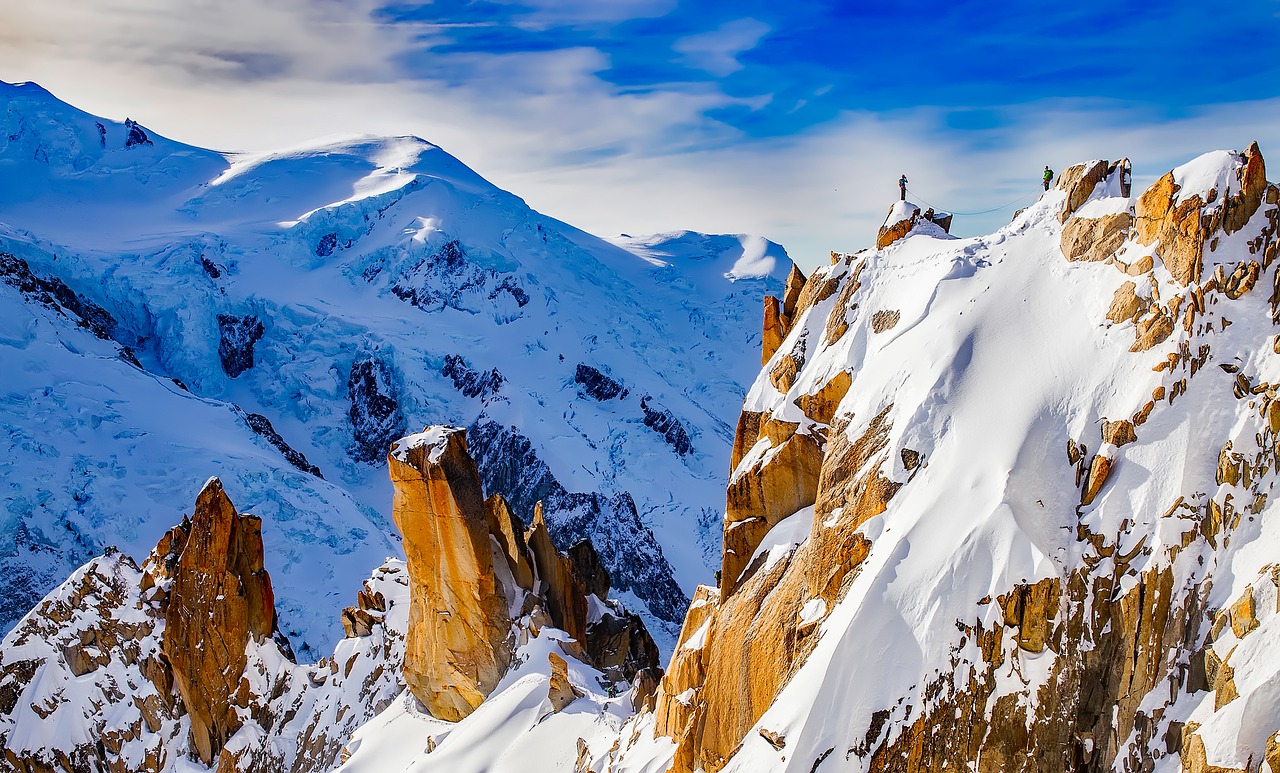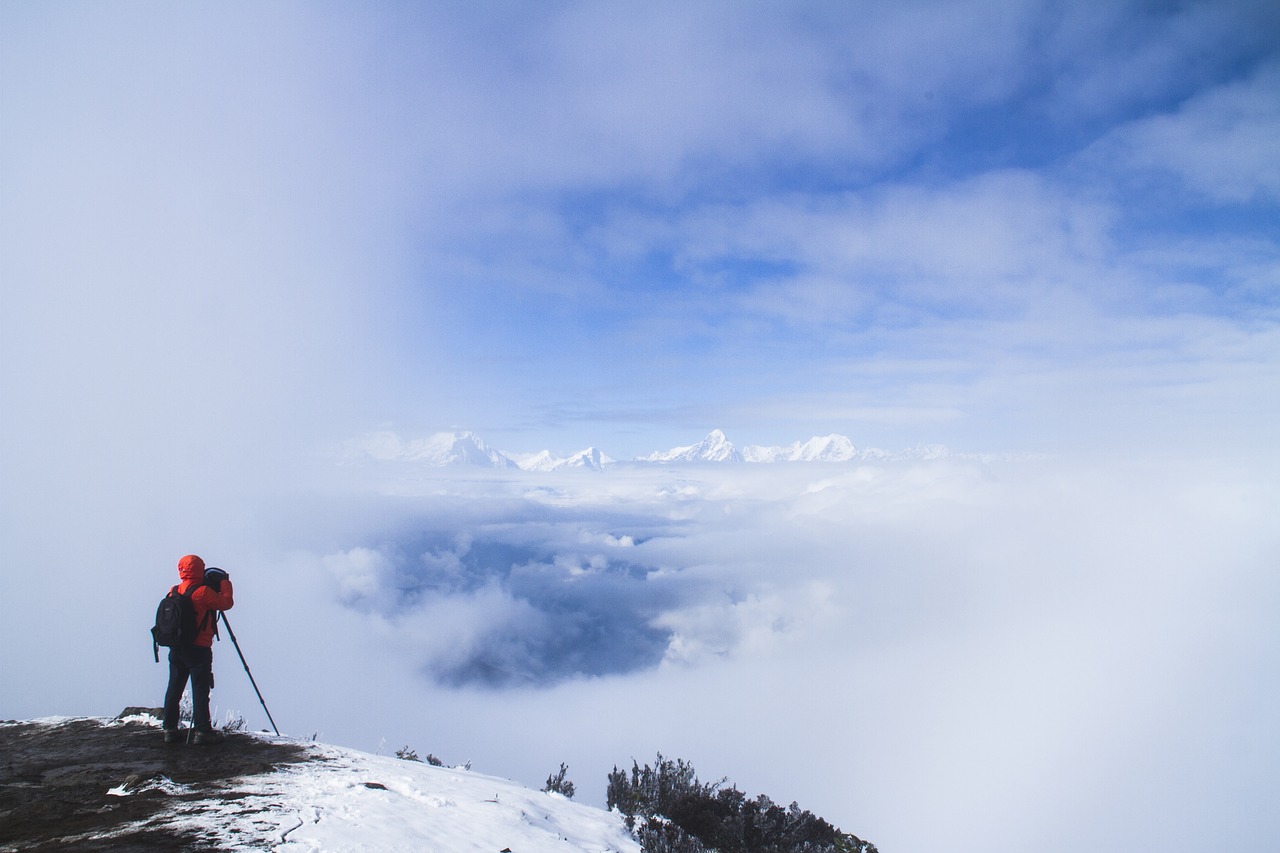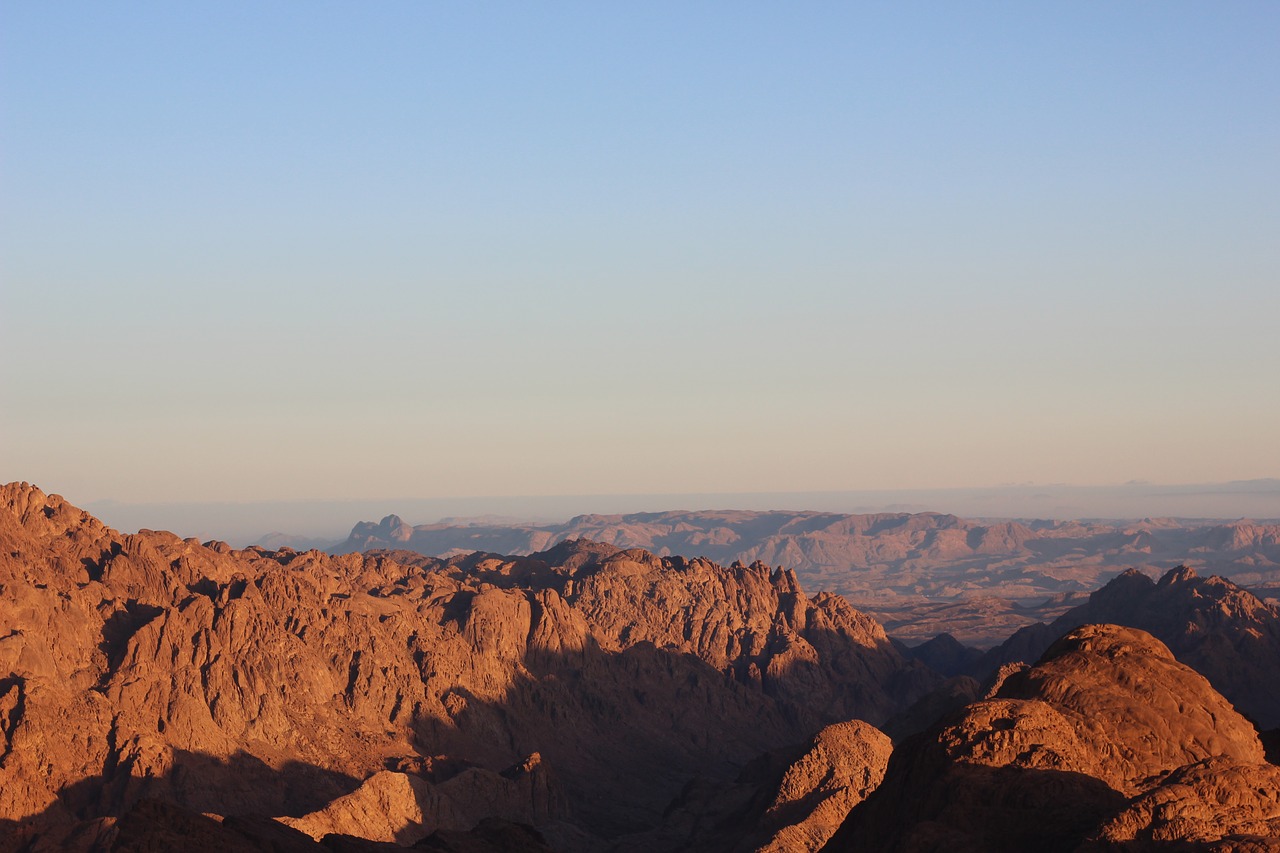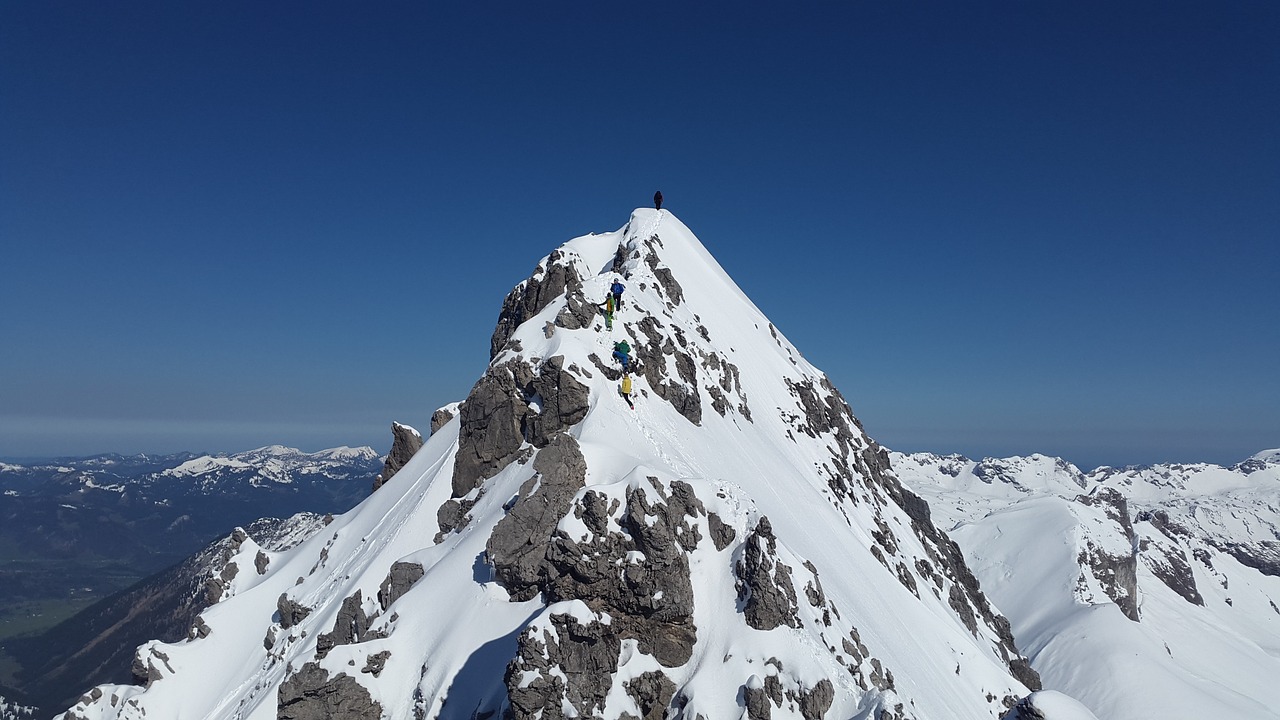Mountain climbing can be a dangerous pursuit, particularly if you are aiming for some of the higher peaks in the world. The higher your altitude gets, the more chance there is of you coming down with a sickness or losing certain bodily functions. When coupled with extreme cold, this can present unique challenges which are not present in any other locations.
Here are some tips you must follow if you plan to combine a mountain climb with a photography opportunity.

photo under CC0
Have the right gear
This applies not just to your photography gear, but also to the things which are going to help you get up the mountain.
Walking poles may be a good idea, especially where the terrain is uneven or if you are planning a climb which will last for more than a day. The poles help to keep you steady and also distribute some of the impact of walking away from your hips, ankles, knees, and lower spine.This will be especially important if you have heavy camera gear to carry along with you as well.
Make sure that you have a backpack with at least two sturdy, padded straps and a waist belt to distribute the weight a little better. It should feel comfortable when you set off, as you need to cover a good distance wearing it and it won’t get much lighter.
Do carry food and drink with you, more than you think you will need, as you won’t be able to get hold of anything else if you need it or get stuck for longer than expected. Choose options which will help you to generate healthy and natural energy, so that you don’t run out of steam during your climb.

photo uder CC0
Dress sensibly
Warm clothing is an absolute must, but remember that it must also be comfortable to wear and easy to maneuver around in. Look for well-fitting shoes which give good support around your ankles, preferably with grippy soles. You can find hiking boots or even boots which are specially designed for climbing the inhospitable environment of a frozen mountain range.
Dress in layers if you are going to a high altitude, as you may want to add or remove them while you go. The temperature changes can be very rapid in thin air, so they may take you by surprise if you are bundled up too tightly. It’s also advisable to wear wind and rainproof clothing for your outer layer.
Don’t forget to bring along a waterproof cover for your camera as well – it’s a good idea to keep it wrapped up even when it isn’t raining, for protection against falling in the snow or dust whipped up by the wind.
Protect your eyes
The sun reflecting off the snow can be incredibly bright. Once you get above the clouds, there is also nothing to protect your eyes when you look into the sky. For this reason, plan to bring sunglasses and even a brimmed hat to keep the sun away even more.
Consider getting a filter for your camera lens which will bring down the brightness a touch – it can even be painful to your sight to look through the viewfinder when the sun is reflecting off the white expanses around you.
Cover your skin
Even if most of your skin will be covered by clothing, there are bound to be some gaps – especially around your face. If it does get warmer, you might also uncover your hands, arms, and neck to cool down. Be sure to bring along sunscreen, as the rays of the sun can be more intense at those high altitudes.
What’s more, you will need insect repellent during the warmer months, because there are lots of airborne critters who thrive at this time. Wearing lighter coloured clothing at this time can also discourage insects from taking a bite out of you.

photo under CC0
Prevent altitude sickness
Acute Mountain Sickness or AMS is extremely serious, and is normally known as altitude sickness because it’s the most common disorder that those climbing at high altitudes experience. It’s characterised by a severe headache, and may also include nausea, fatigue, insomnia, dizziness, and drowsiness. AMS can also put you at a higher risk of developing high-altitude pulmonary edema (HAPE) or high-altitude cerebral edema (HACE), both of which are life-threatening conditions.
One of the biggest steps towards preventing this is to start with acclimatization techniques. You will want to start at a lower altitude and climb up gradually, rather than getting flown in to a higher level. It can be tempting to get in quick to get the shot you want, but you could end up seriously suffering for it! Once you get to around 8,000 feet, it’s even recommended not to climb more than 1,000 feet more every day.
You should also consider getting medical advice before you climb if you’ve ever suffered from a severe asthma attack, a heart attack, a blood clot, or a stroke. These are all conditions which could be exacerbated by the altitude. To boost your health further, don’t drink any alcohol, don’t smoke, stay hydrated, and eat regularly on the climb. You can also carry an oxygen supply if it feels necessary.
There is also medication that you can take in order to help your body cope better with the height of your ascent. If your trip will take more than one day, consider sleeping at a lower altitude where possible so that you aren’t always sleeping at the highest possible point of your climb. It’s harder to breathe during the night at a high altitude.

photo by Simon Steinberger | CC0
Take action
If there is any kind of emergency during your climb, it’s important to take action as soon as possible. If you or someone you are climbing with shows any signs of altitude sickness, you should descend immediately. You should try to go 3,000 feet lower or more to recover from the effects.
You can also take medication, take oxygen, or go inside a pressurized Gamow bag to help slow the sickness. Take a satellite phone so that you can indicate that you are in need of emergency assistance if possible.
Have back-ups
Certain parts of your camera may start to malfunction or function in a strange way in cold temperatures. One of these is your battery.
It’s entirely possible that cold weather will cause the charge to drop out of your battery, leaving you with much less life than you thought. Take spares with you stored inside your clothing to keep them warm, and turn off any functions which aren’t absolutely essential for camera use – such as the LCD screen, the flash, and even the auto focus. Turn your camera off completely when you aren’t shooting.
Protect your lenses
Lenses are very susceptible to damage from condensation when you are moving from one area to another where the temperature differs greatly. Try to slowly bring your camera out of a warm environment – such as your base accommodation – into the colder air.
You can move it into a porch or other covered area for an hour after leaving a heated area, to help it settle a bit more. If the cold is seriously intense, you may wish to take several intermediate steps. During this time, you can remove your battery so that it stays warm for shooting later.
In order to reduce the risk of condensation even further, get a simple air-tight bag and a sachet of silica gel. Put the camera and the gel into the bag together. The gel will soak up any condensation so that your camera stays dry and undamaged.
You should also place your camera and lenses into a bag which has extra padding, as glass can become more brittle in the cold. This means that if you should drop them, you definitely want them to be protected as much as possible. Be sure to use your neck strap or a wrist strap when shooting, in case the cold makes the camera slip out of your hands or gloves.
A lot of the steps that you need to take to protect yourself and your camera during a mountain climb are simply common sense. Some of them, however, can only be learned through experience the hard way. That’s why it’s a good idea to take the advice of those who have gone before you! Remember that you also need to be prepared for a safe climb, even if you feel that you are ‘only’ documenting those who are travelling with you.
Photo license link: CC0